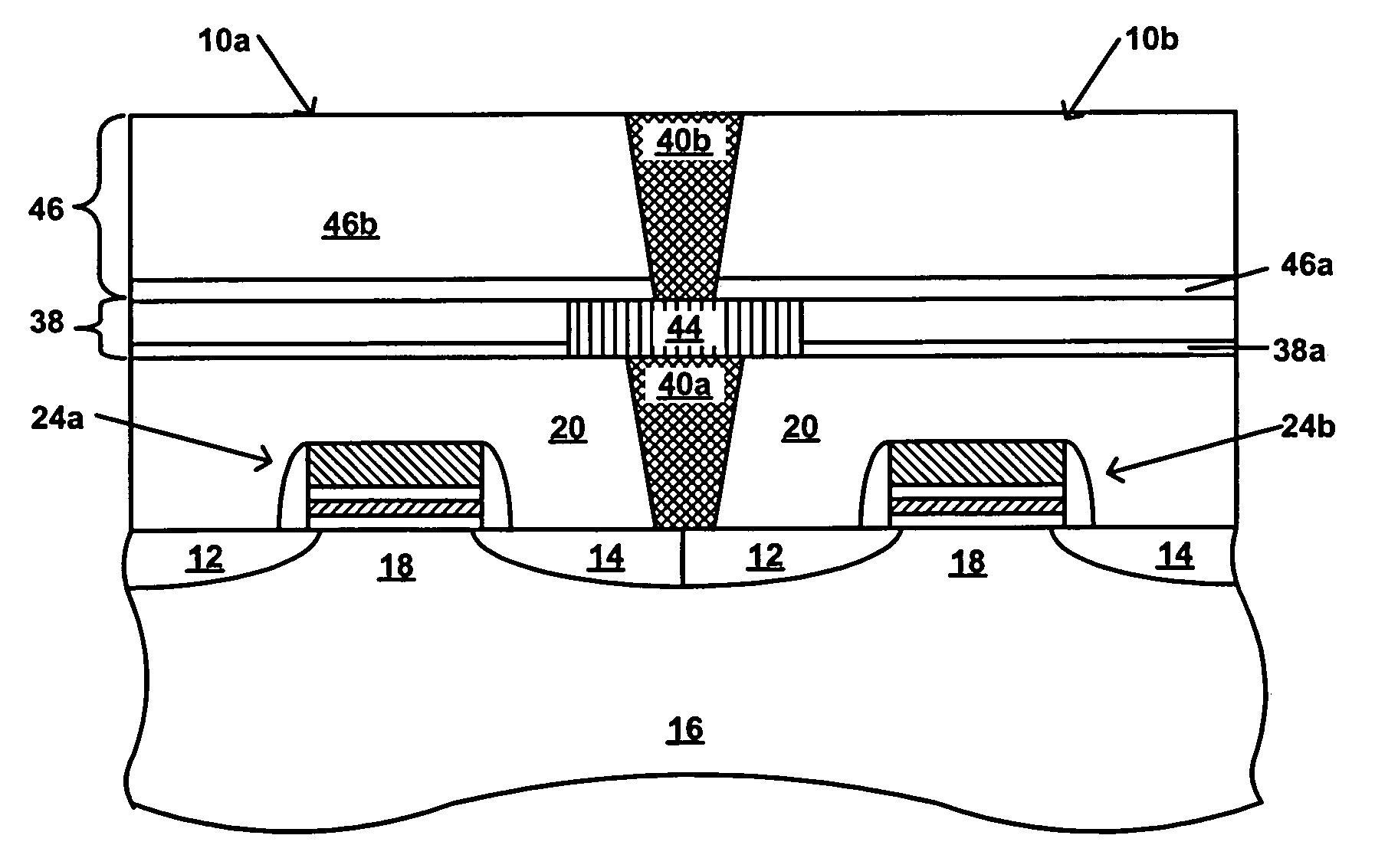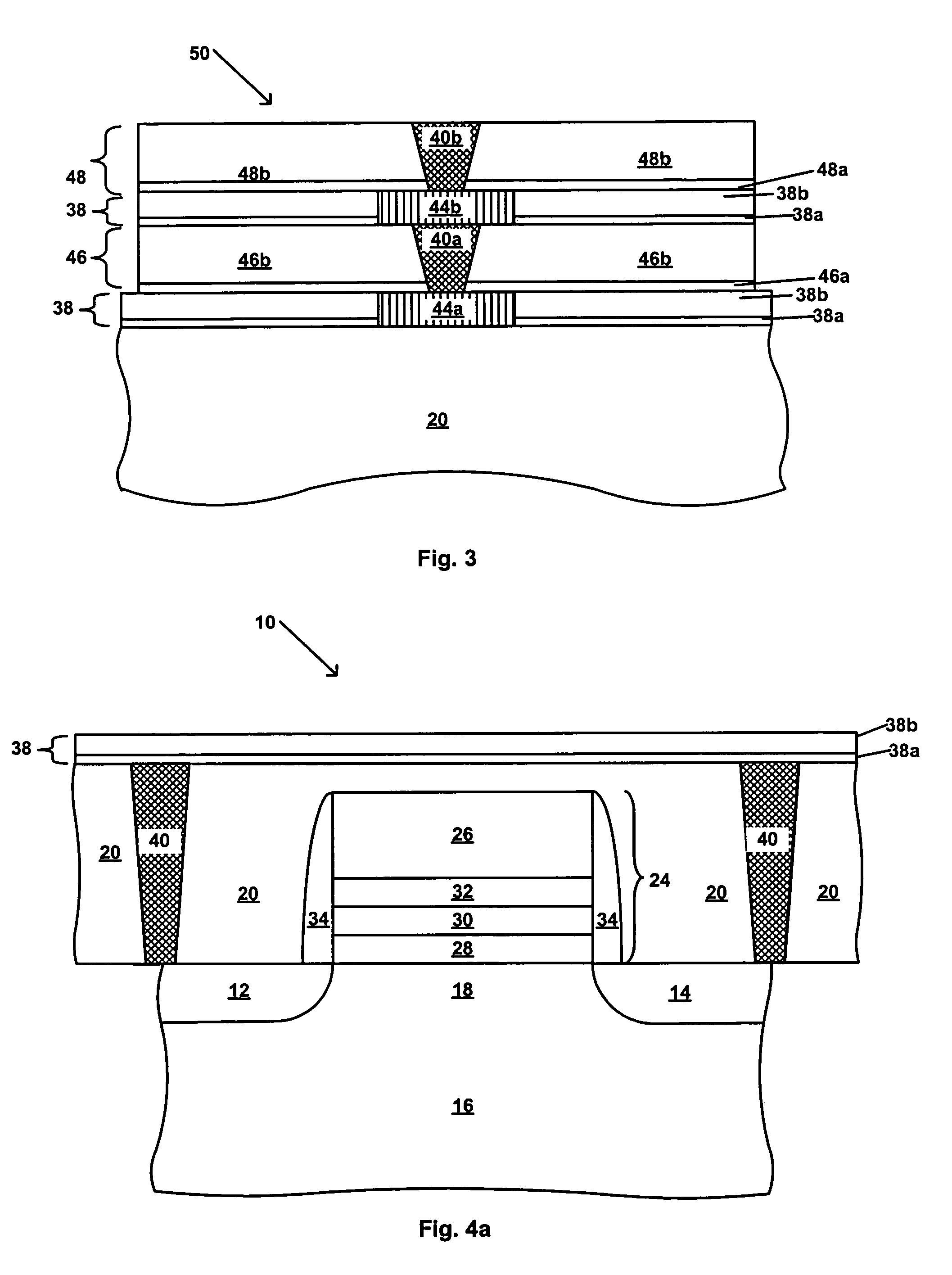UV-blocking etch stop layer for reducing UV-induced charging of charge storage layer in memory devices in BEOL processing
- Summary
- Abstract
- Description
- Claims
- Application Information
AI Technical Summary
Benefits of technology
Problems solved by technology
Method used
Image
Examples
Embodiment Construction
[0026]Referring first to FIG. 1, there is schematically shown in cross-section a transistor 10, which in one embodiment is a charge trapping dielectric flash memory cell, suitable for use in a dual-bit EEPROM device, such as the MIRRORBIT™. The transistor 10 includes source / drain regions 12 and 14 located in a semiconductor substrate 16 and separated by a channel region 18. The substrate 16 may be, for example, a single crystal silicon wafer. The substrate 16 may also be gallium arsenide, a silicon-on-insulator layer, an epitaxial layer, a silicon-germanium layer, a germanium-on-insulator layer, or other known semiconductor substrate. A stack gate 24 overlies the channel region 18. The stack gate 24 includes a control gate electrode 26, and an ONO structure including a bottom or tunnel oxide layer 28, a charge storage layer 30 and a top oxide layer 32, as shown in FIG. 1. In one embodiment, the charge storage layer 30 is a nitride containing charge storage layer. In one embodiment, ...
PUM
 Login to View More
Login to View More Abstract
Description
Claims
Application Information
 Login to View More
Login to View More - R&D
- Intellectual Property
- Life Sciences
- Materials
- Tech Scout
- Unparalleled Data Quality
- Higher Quality Content
- 60% Fewer Hallucinations
Browse by: Latest US Patents, China's latest patents, Technical Efficacy Thesaurus, Application Domain, Technology Topic, Popular Technical Reports.
© 2025 PatSnap. All rights reserved.Legal|Privacy policy|Modern Slavery Act Transparency Statement|Sitemap|About US| Contact US: help@patsnap.com



